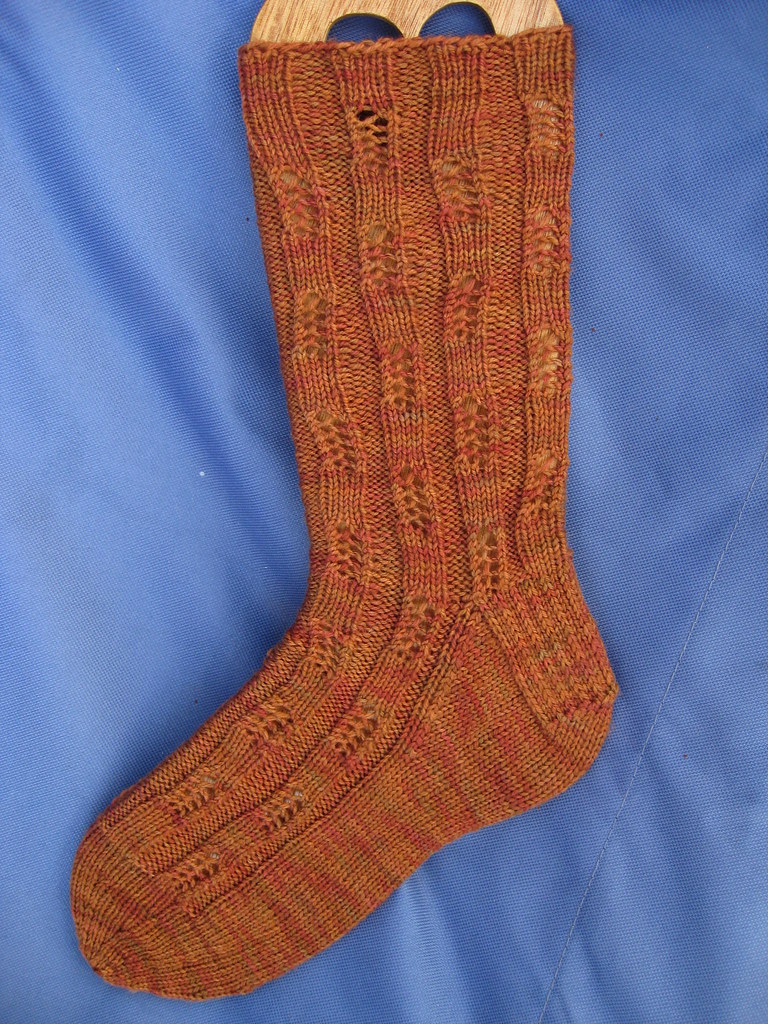 Since I retired from the wonderful world of work, I no longer jump in the shower every morning, throw on clothes, and dash off to an hour-long freeway commute. Instead I mosey out to the kitchen, fix myself a mug of tea, and take it back to bed with me. There I sip, knit on something tremendously simple, and wake up ever so slowly. On gray -- or otherwise slothful -- mornings there may be a second mug.
Since I retired from the wonderful world of work, I no longer jump in the shower every morning, throw on clothes, and dash off to an hour-long freeway commute. Instead I mosey out to the kitchen, fix myself a mug of tea, and take it back to bed with me. There I sip, knit on something tremendously simple, and wake up ever so slowly. On gray -- or otherwise slothful -- mornings there may be a second mug.
It's critical that the morning knitting be very, very simple. No cables, no lace, nothing with any sort of chart at all. In a semi-somnolent state, I'm capable of major errors. It's no fun to spend as much time tinking as knitting. And at the end of the day, after all that effort – zero progress.
 My current morning project is a shawl. Not a lace shawl, just a shawl. The pattern is called Weaver's Wool Mini Shawl and it's plain garter stitch with regular yarnovers in a four-row sequence to provide the necessary increases to the four sections. I'm not sure how to describe the shape. Definitely not a classic triangle, rectangle, square, or circle. Someone on Ravelry alluded to "Faroese" in speaking of this shawl; perhaps that's the shape.
My current morning project is a shawl. Not a lace shawl, just a shawl. The pattern is called Weaver's Wool Mini Shawl and it's plain garter stitch with regular yarnovers in a four-row sequence to provide the necessary increases to the four sections. I'm not sure how to describe the shape. Definitely not a classic triangle, rectangle, square, or circle. Someone on Ravelry alluded to "Faroese" in speaking of this shawl; perhaps that's the shape.
 I'm using 100% alpaca yarn, a delight to the hands. Since there wasn't enough of any one color, it's going to be a colorblock shawl – blue, olive green, and rust. And not only will this project help reduce my own stash, it will also de-stash my neighbor, who hardly needed any persuasion at all to donate two of the three colors.
I'm using 100% alpaca yarn, a delight to the hands. Since there wasn't enough of any one color, it's going to be a colorblock shawl – blue, olive green, and rust. And not only will this project help reduce my own stash, it will also de-stash my neighbor, who hardly needed any persuasion at all to donate two of the three colors.
The shawl will be completed when it looks big enough or when I run out of yarn, whichever comes first. It's that sort of pattern. Restful.
 Sharon
Sharon


























